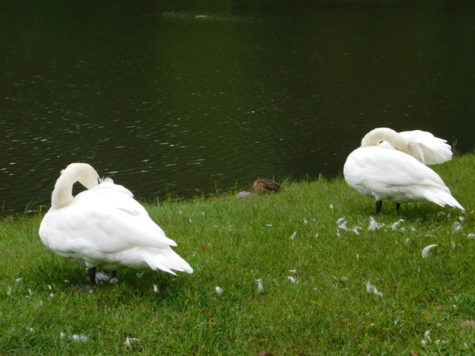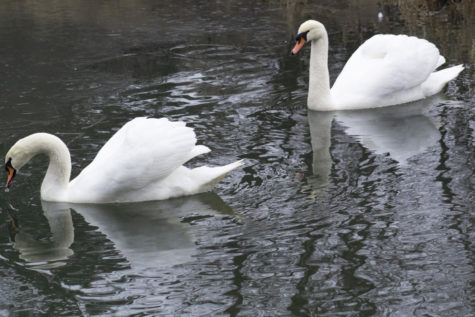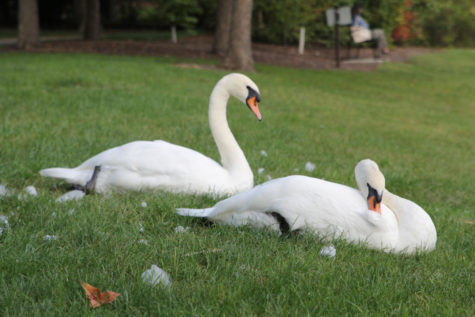Letter to the editor: Student group explains importance of Diwali festival
November 3, 2013
Of the variety of festivals that display India’s diversity, Diwali, the “festival of lights,” is the most widely celebrated. Amid the dark autumn night skies, lights illumine homes and cities while society celebrates with gatherings, gifts and feasts. Preceding Diwali by 18 days is Dussehra, marking the day Prince Raam of Ayodhya rescued his wife, Sita, from an evil king, Raavan of Lanka.
This year, Indian lunar calendars place Diwali on Nov. 3, the commemoration of Raam’s return home. Diwali is also called Deepaawali which means “a row of lamps (deep).” Learning of Raam’s return, Ayodhya’s citizens expressed their delight by decorating their homes and lighting earthen lamps along his path.
Like most kids who grow up in India, our fondest memories of Dussehra and Diwali are watching “Raamlila” (a 10-night enactment of Raam’s adventures), burning (predating Burning Man), a 50-foot tall effigy of Raavan and, most importantly, lighting firecrackers. But as we got older, we were introduced to the morals that these two festivals attempt to highlight.
Raamlila is a part of the Ramayan, a renowned epic in Hindu literature. As the story unfolds, we learn that Raam symbolizes all admirable virtues such as honesty, patience and humility. His nature of governance, known as Raam-raajya (meaning Raam’s administration) was so just that it is still referred as an epitome for Indians. On the other hand, all human vices (for example lust, envy, ego, greed and anger) are personified in Raavan, arguably the most learned man of his time. With Raam’s victory over Raavan, the Raamlila irrefutably demonstrates that knowledge and power are meaningless without compassion.
Raamlila begins with Raam’s father being tricked into sending Raam into exile. Being an obedient son, Raam promised to return from the forest after 14 years. As true companions, his wife Sita and brother Laxman accompanied him during this banishment. Raavan, who was infatuated with Sita, used wizardry to imprison her in Lanka.
The brothers set out on their quest to rescue Sita, faced many challenges and helped everyone they met. For example, they assisted in emancipating King Sugreev and his simian citizens who then pledged allegiance to free Sita. Upon reaching Lanka, Raam tried all peaceful means to convince Raavan to release Sita but failed. Left with no other option, Raam’s level of chivalry was seen when he publicly regretted the inevitability of war and apologized to Raavan before eventually slaying him, freeing Sita and subsequently, Lanka.
Festival preparations start weeks ahead and include meticulous cleaning and making various types of sweets, snacks and feasts. Diwali lasts for five days with each day having its own significance and meaning. Laxmi, goddess of wealth, is commonly worshipped in most of the traditions. In some traditions, Diwali marks the start of a new year. Throughout these five days, oil lamps, or nowadays electric lights, are placed in rows along the parapets of temples and houses. Children enjoy lighting and watching fireworks. Diwali also promotes social festivities where people visit their neighbors, extended families, friends and exchange gifts and sweets. Love and affection among siblings is celebrated on the final day.
Diwali also marks a myriad of other joyous events, like Krishna’s victory over the demon Narakasura, enlightenment of the Last Jain Tirthankar (prophet), Sikhs remember the freeing of Guru Hargobind Ji, the sixth guru. While the story behind Diwali and the manner of celebration varies from region to region, the essence is the same — to rejoice in the Inner Light or the underlying reality of all things, or in simple words to signify the importance of virtues over vices.
As members of Hindu Yuva, an ISU student organization, we are trying to promote social harmony independent of beliefs. We organize discussions and activities to demystify Indian philosophy and learn from others. Hinduism along with all belief systems of Indian origin are pluralistic and promote equality amongst all and respects every peace promoting system. A scripture called “Shiva Mahimna Stotra” states that all s ources of knowledge are welcome. We hope that stories like Raam’s encourage us all to destroy the Raavan in us all. The Hindu temple in Madrid, Iowa, will be celebrating Diwali on Sunday, Nov. 9.
From all the members of Hindu Yuva:
Shubh Deepawali!















